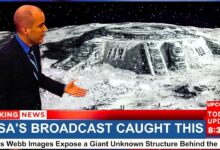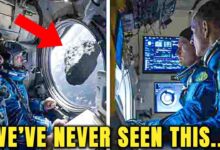Disappearance of Flight 19 Finally Solved, And It’s Not Good
The Mystery of Flight 19: How Science Finally Solved a Bermuda Triangle Legend
On the afternoon of December 5, 1945, five U.S. Navy TBM Avenger torpedo bombers took off from Naval Air Station Fort Lauderdale, Florida, for a routine training mission. Designated “Navigation Problem Number One,” the flight plan was straightforward: head east to practice bombing at Hens and Chickens Shoals in the Bahamas, then fly north over Grand Bahama Island, and finally turn southwest back to base.
Lieutenant Charles Taylor, a seasoned naval aviator with over 2,500 flight hours, including combat missions during World War II, led the flight. Onboard the five aircraft were 14 men, a mix of instructors and students, most of whom were experienced and capable. The aircraft were fueled for approximately four hours of flight, giving them a comfortable margin beyond the planned three-hour exercise.
Initially, the mission proceeded without incident. Radio communications confirmed that the group reached their practice area and successfully completed their bombing exercises. However, trouble soon followed. At approximately 3:50 p.m., unsettling radio transmissions were intercepted. Lieutenant Taylor’s voice was heard expressing confusion and concern: “I don’t know where we are. We must have got lost after that last turn.” Even more alarming was his report that both of his compasses were malfunctioning.
Taylor incorrectly believed the flight had somehow ended up over the Florida Keys and ordered the squadron to fly north in an attempt to reach the Florida mainland. In reality, they were still over the Bahamas. Flying north pushed them even farther out into the Atlantic Ocean. As the confusion deepened, fuel supplies became a critical concern. Weather conditions, initially mild, had begun to deteriorate with increasing cloud cover and wind. Radio transmissions captured the growing anxiety among the pilots. One student was heard saying, “If we would just fly west, we would get home.” Another questioned, “What the hell are we doing heading out to sea again?”
At 5:50 p.m., the final transmission from Flight 19 was received. Taylor instructed, “All planes close up tight… We’ll have to ditch unless landfall… When the first plane drops below 10 gallons, we all go down together.” After that, radio contact was permanently lost. As darkness fell over the Atlantic Ocean, five Navy planes and 14 men simply vanished.
The U.S. Navy quickly initiated a search operation. A Martin PBM Mariner flying boat was dispatched from Banana River (now Patrick Space Force Base) to locate Flight 19. Tragically, this aircraft also disappeared, reportedly exploding midair, killing all 13 crew members aboard. Witnesses on a nearby ship reported seeing a fiery explosion in the sky. The disappearance of the rescue plane added to the growing mystery and deepened public intrigue.
Within days, the search expanded to become one of the largest air and sea rescue efforts in U.S. history. Over 250 aircraft and multiple ships scoured an area of 250,000 square miles, roughly the size of Texas. No wreckage, life rafts, oil slicks, or bodies were ever found. In the following decades, the mystery grew.
It wasn’t until 1964 that the term “Bermuda Triangle” entered popular culture, thanks to an article by Vincent Gaddis titled The Deadly Bermuda Triangle. He suggested that supernatural forces or alien activity may have been responsible for the disappearance. The legend exploded in the 1970s with best-selling books and Hollywood films, most notably Close Encounters of the Third Kind, which depicted Flight 19 airmen as having been abducted by extraterrestrials.
Many theories have been proposed over the years. Some suggested powerful magnetic anomalies disrupted navigational instruments. Others claimed methane gas eruptions from the ocean floor caused ships and aircraft to sink without a trace. More speculative explanations involved time warps, alien abductions, or connections to Atlantis.
Despite countless search efforts—including expeditions in 1984, 1986, and numerous others throughout the 1990s and early 2000s—Flight 19 remained elusive. Even when five Avenger aircraft were found underwater in 1986, they were ultimately identified as unrelated crashes. Deep-sea scans, robotic searches, and sonar mapping failed to locate any trace of the missing planes.
The turning point came in the early 2020s with breakthroughs in deep-sea exploration technology. New quantum magnetometers could detect even small disturbances in the Earth’s magnetic field caused by metal objects buried under the seabed. These tools were complemented by autonomous underwater vehicles (AUVs) capable of remaining submerged for weeks and scanning massive swaths of the ocean floor.
Machine learning algorithms trained to identify aircraft wreckage were applied to years of sonar and video data. They filtered out false positives and zeroed in on previously overlooked debris fields. Satellite-based gravitational mapping further pinpointed anomalies on the ocean floor, helping direct search efforts more precisely.
In 2023, after analyzing newly identified anomalies and refining previous search coordinates, a specialized expedition finally made a breakthrough. Utilizing AUVs equipped with cutting-edge imaging equipment, researchers located what appeared to be wreckage matching the dimensions and structure of TBM Avenger aircraft. Serial number fragments were later confirmed by the U.S. Navy to match Flight 19.
The evidence overwhelmingly pointed to navigational error, compounded by compass malfunction and worsening weather. Taylor’s mistaken belief that he was over the Florida Keys led to a fatal decision to head east—away from safety. The commitment to stay together as a unit, while noble, likely sealed their fate. They ran out of fuel and were forced to ditch in the ocean, where high waves and darkness likely prevented survival or recovery.
After nearly 80 years, the legend of Flight 19 has finally been explained. While myths of alien abductions and supernatural forces captivated imaginations for decades, it was human error, technological failure, and the unforgiving nature of the sea that doomed the mission. Thanks to modern science and relentless investigation, the mystery that once defined the Bermuda Triangle can now be laid to rest.




